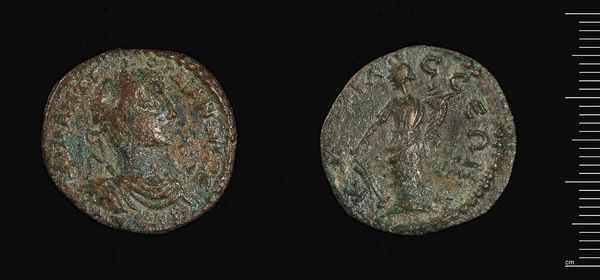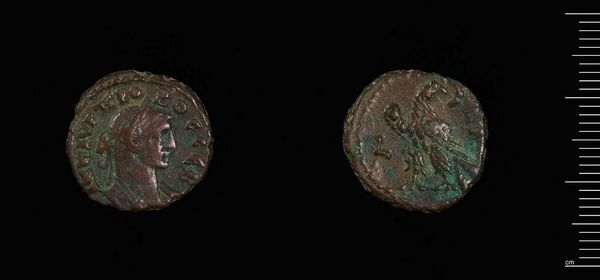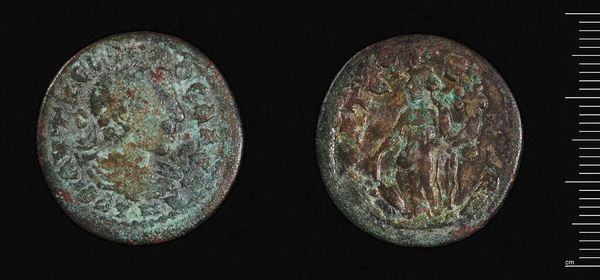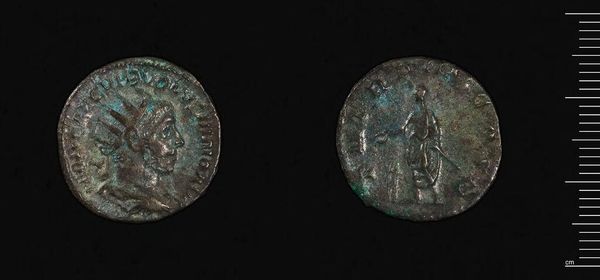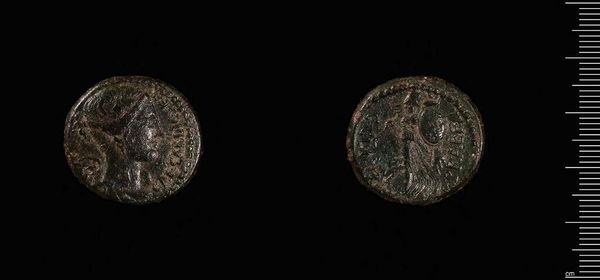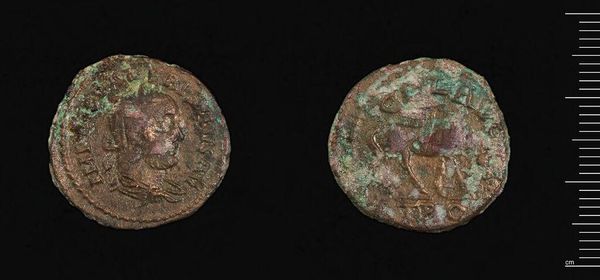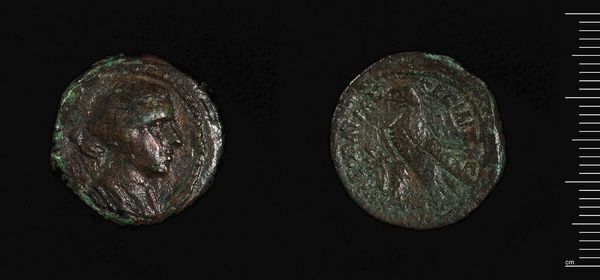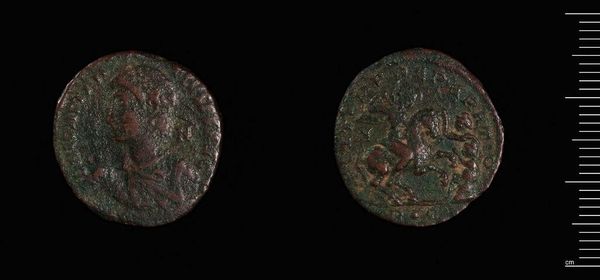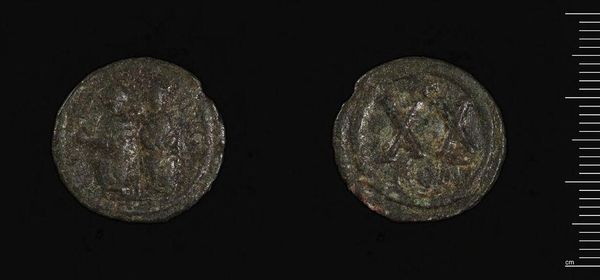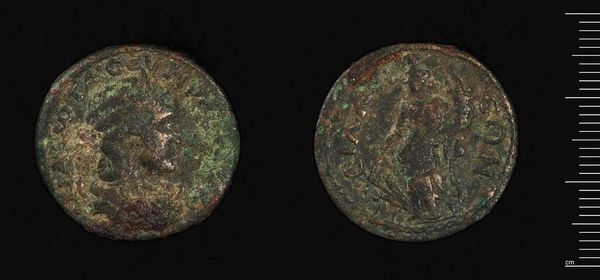
Dimensions: 7.03 g
Copyright: CC0 1.0
Curator: Here we have "Coin of Amphipolis under Elagabalus," currently residing at the Harvard Art Museums. Editor: There's such a palpable sense of history radiating from the worn surface—almost as if you could feel the weight of time itself pressing down upon it. Curator: Indeed. Coins of this era served not just as currency but also as potent symbols of imperial power and propaganda, circulating the emperor's image and associated ideologies. Editor: The patina, with its varied greens and browns, creates a complex, almost topographic texture. The incised lines, despite their wear, still manage to articulate form with a certain degree of precision. Curator: The imagery featured—the emperor's portrait and likely a representation of a deity or imperial achievement—were designed to resonate with the populace, reinforcing the emperor's legitimacy and divine favor. Editor: I'm struck by the tension between the coin's small scale and its grand ambition—to encapsulate an entire reign, an entire belief system, within such a limited space. Curator: The coin embodies the Roman concept of "persona," literally projecting power. Editor: It's fascinating to see how the formal elements—composition, texture, and even the coin's physical degradation—contribute to its overall message and emotional impact. Curator: In a way, it becomes a powerful artifact. Editor: It really does. The coin's visual and symbolic weight far exceeds its mere seven grams.
Comments
No comments
Be the first to comment and join the conversation on the ultimate creative platform.
